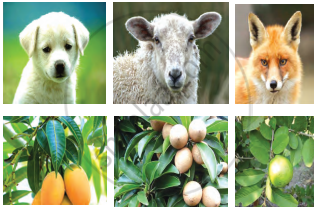Advertisements
Advertisements
प्रश्न
Write short notes based upon the information known to you.
Connecting link
उत्तर
Connecting link: Connecting link refers to plant and organisms which show characteristics related to two different groups. For example, Peripatus is considered a connecting link between annelida and arthropoda. It has characteristics like segmented body, thin cuticle and parapodia-like organs which are similar to annelids. It also shows tracheal respiration and open circulatory system which is similar to arthropods. Another example is duck billed platypus which is a connecting link between reptiles and mammals as it lays eggs like reptiles and has mammary glands like mammals.
APPEARS IN
संबंधित प्रश्न
Which of the following pairs of two vegetables represent the correct homologous structures?
(A) Sweet potato and potato
(B) Sweet potato and tomato
(C) Carrot and potato
(D) Radish and carrot
With the help of any two suitable examples explain the effect of anthropogenic actions on organic evolution.
Which of the following is a correct set of homologous organs?
(a) Forelimbs of frog, bird and lizard
(b) Spine of cactus and thorn of bougainvillea
(c) Wings of bat and wings of butterfly
(d) Wings of a bird and wings of a bat
Can the wing of a butterfly and the wing of a bat be considered homologous organs? Why or why not?
Find out from newspapers and popular science articles any new fossil discoveries or controversies about evolution.
Enlist any four sequential evolutionary names of human ancestors.
Name the scientists who Discovered the fossil of Australopithecus
What are homologous organs?
Select and write analogous structures from the list given below :
1) Wings of butterfly and birds
2) Vertebrate hearts
3) Tendrils of Bougainvillea and Cucurbita
4) Tubers of sweet potato and potato
The organs which perform different functions but have the same basic structure are known as :
(a) homologous organs
(b) analogous organs
(c) homolytic organs
(d) analytic organs
Wing of an insect and forelimb of a bird are :
(a) analogous organs
(b) analeptic organs
(c) homologous
(d) homophobic organs
Answer the following question.
Wisdom teeth : Vestigial organs :: Lungfish : ....................
_______ is a connecting link between Annelida and Arthropoda.
Choose the correct option of the following question:
Wings of Insect and Birds are examples of :
Explain any three molecular (genetic) evidences in favour of organic evolution.
Define fossil.
Differentiate between connecting links and the missing links.
Explain the importance of Anatomical evidences with examples.
Name the parts shown in the diagram.
Human jaw

Match the following.
| Column A | Column B |
| 1) Morphological evidences | a) Tail-bone or wisdom teeth |
| 2) Paleontological evidences | b) Leaf venation |
| c) Fossils |
Observe the given images and answer the following questions.

- Which evolutionary evidence does it indicate?
- What does it prove?
- State another example of evolutionary evidence.
Observe the following images and answer the questions.

- Which evolutionary evidences are indicated in the given picture?
- How are they formed?
- Which method is used to measure their age or their time?
Explain any five types of evidence that support the theory of evolution.
The degenerated and non-functional organs found in an organism are called ______.
Select the CORRECT set of homologous organs.
The fossil remains of Archaeopteryx is a connecting link between ______
Why do all the gametes formed in human females have an X chromosome?
Cucurbits do not develop thick and woody stem as they are:
Basic principles of embryonic development were pronounced by:
The presence of gill slits, in the embryos of all vertebrates, supports the theory of ______.
Which of the following is used as an atmospheric pollution indicator?
Animal husbandry and plant breeding programmes are the examples of ______.
Did aquatic life forms get fossilised? If, yes where do we come across such fossils?
Give an example for convergent evolution and identify the features towards which they are converging.
Complete the following diagram:

As shown in figure below some organisms that share a common ancestor have features that have different functions, but similar structures.

These are known as ______. Give example.
